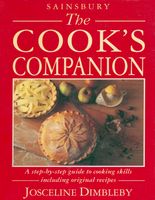Advertisement
Breads and Yeast Cookery
Appears in
Published 1991

Nothing whets the appetite as much as the smell of freshly baked bread filling the kitchen. There is some thing both soothing and rewarding about baking your own bread, and, once you have mastered the basic art and understood the principles of bread-making, you will realize how easy it is and will soon want to make it a regular part of your cooking life, and even to try more ambitious recipes.
The great advantage of making bread at home is the opportunity to vary and mix flours and add all sorts of flavourings, seeds, grains and enrichments. In any case, even with an identical dough mixture, homemade bread is unlikely to turn out exactly the same twice running. The atmosphere in your kitchen, the weather and the oven, quite apart from the brand of flour, all make small differences. The brown loaf which I make in the Calor gas stove of our holiday cottage looks, feels and tastes quite different to the one I make at home – I always think it is better, but it may be that appetites are keener and more appreciative as a result of outdoor life. The only disadvantage of homemade bread is that it does not contain improvers, so that it doesn’t last as long as commercial bread, but brown bread with added oil or fat lasts fairly well.

